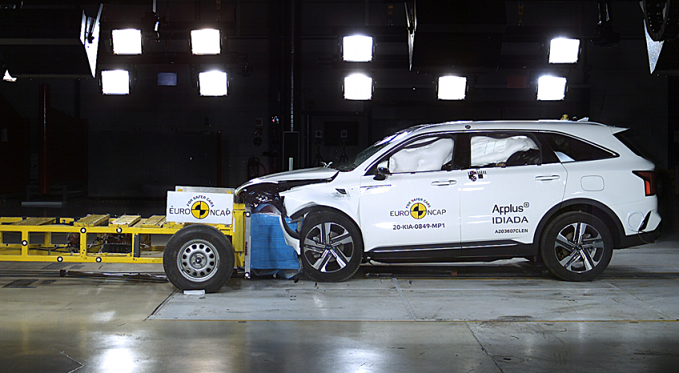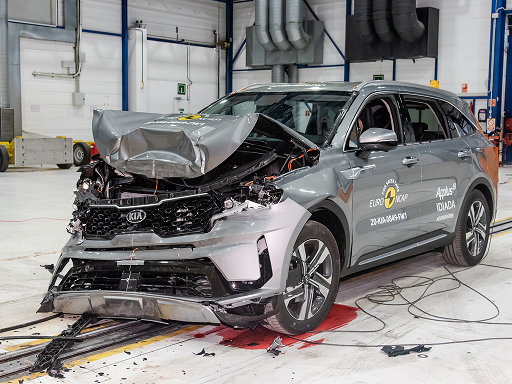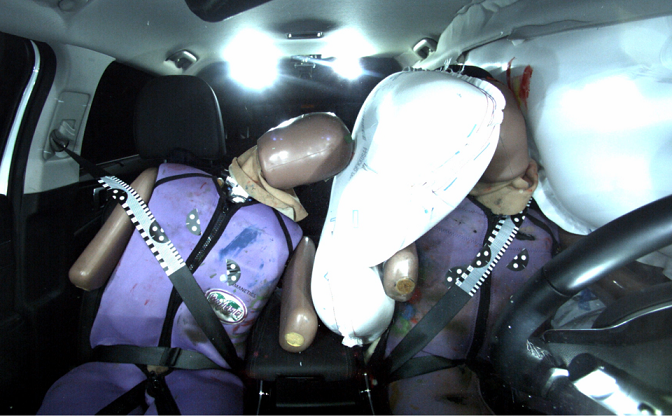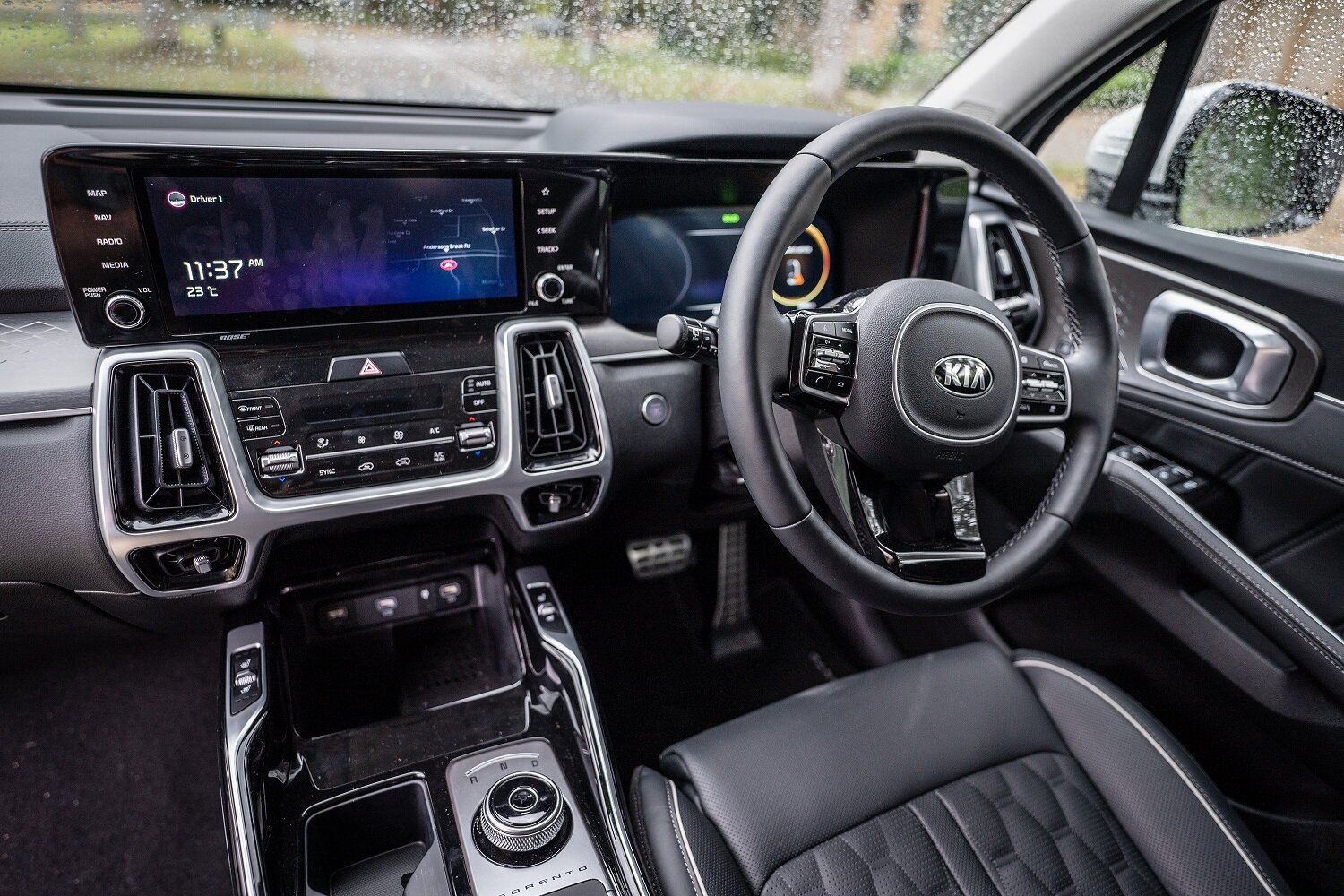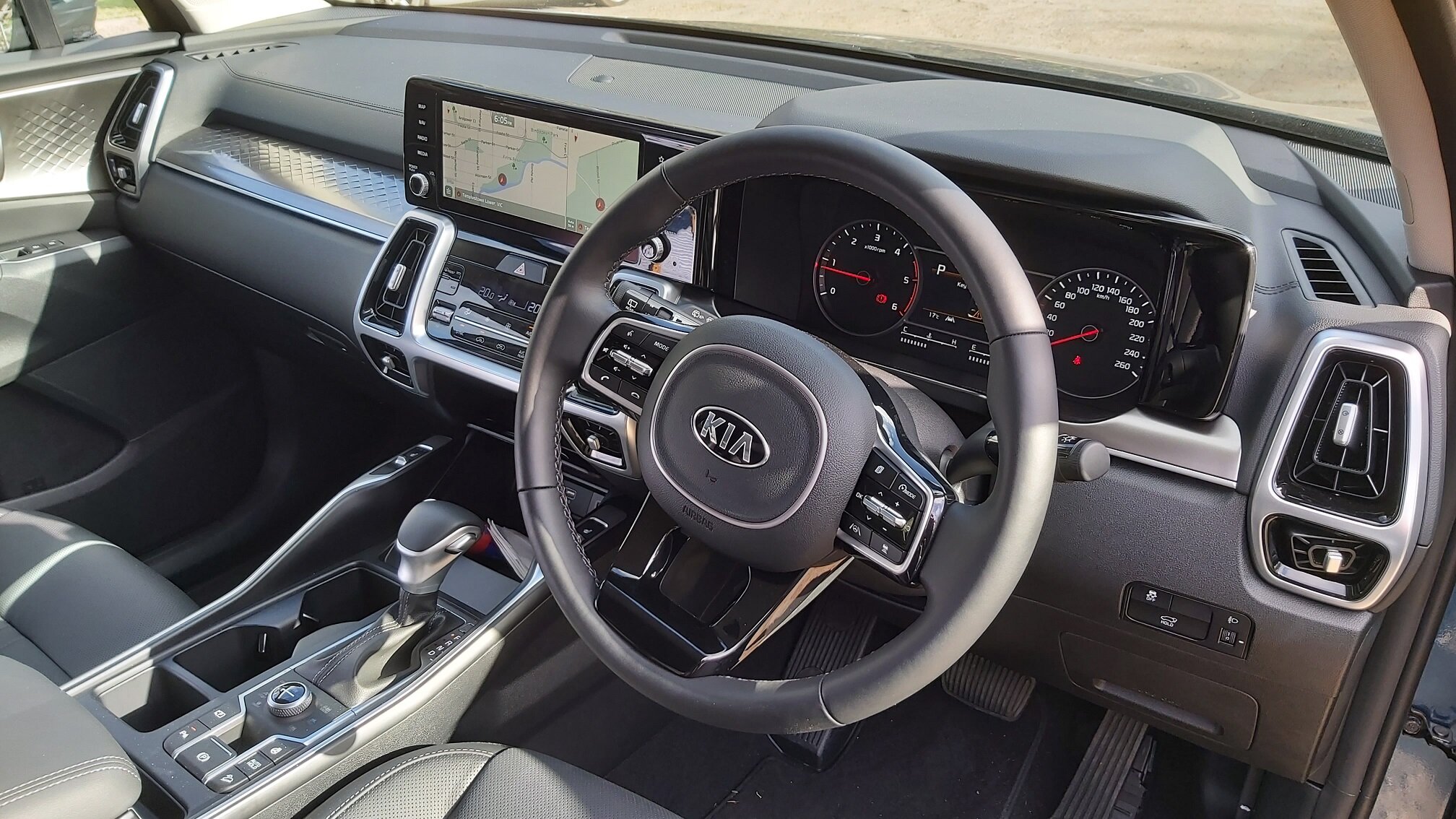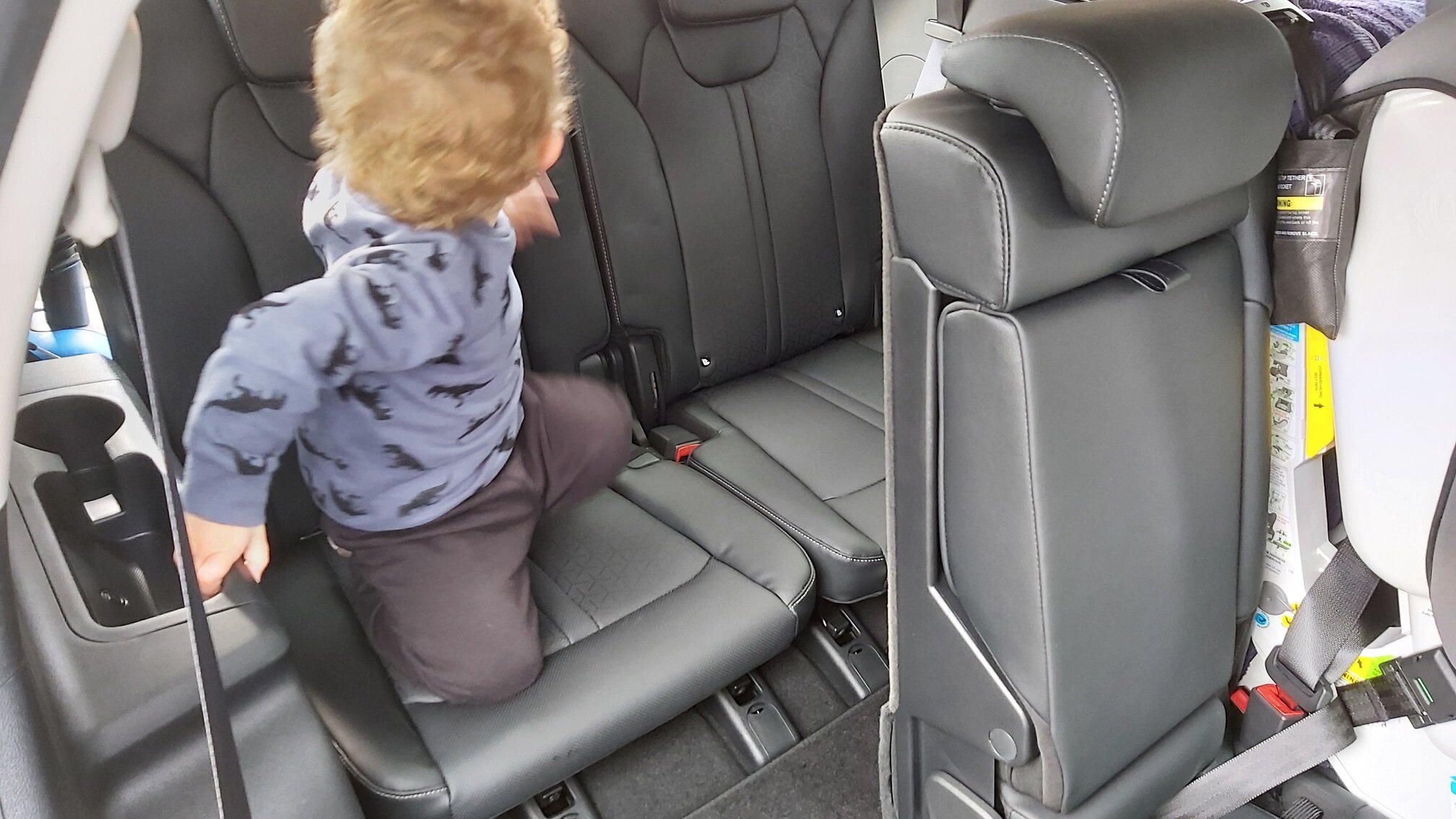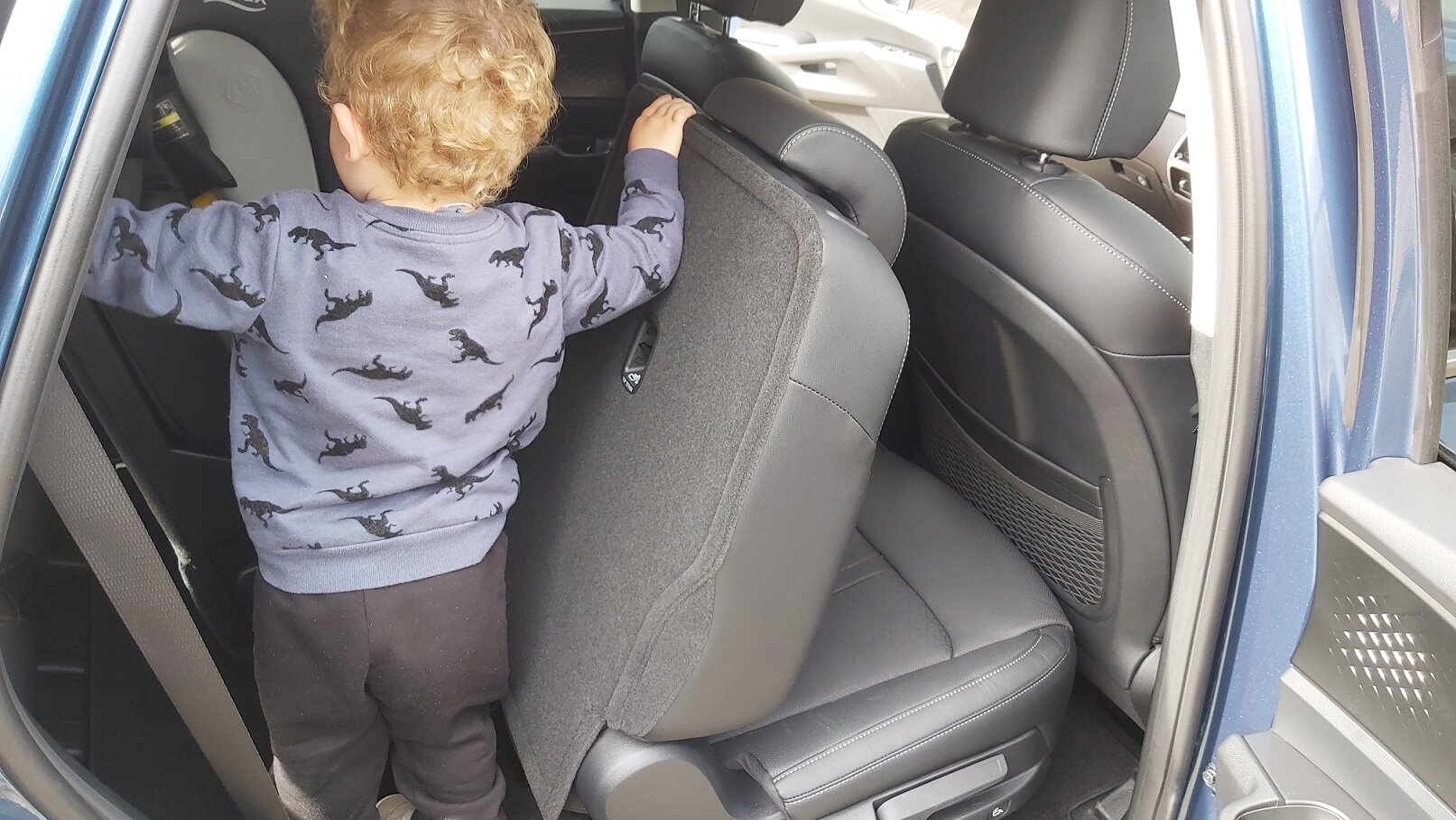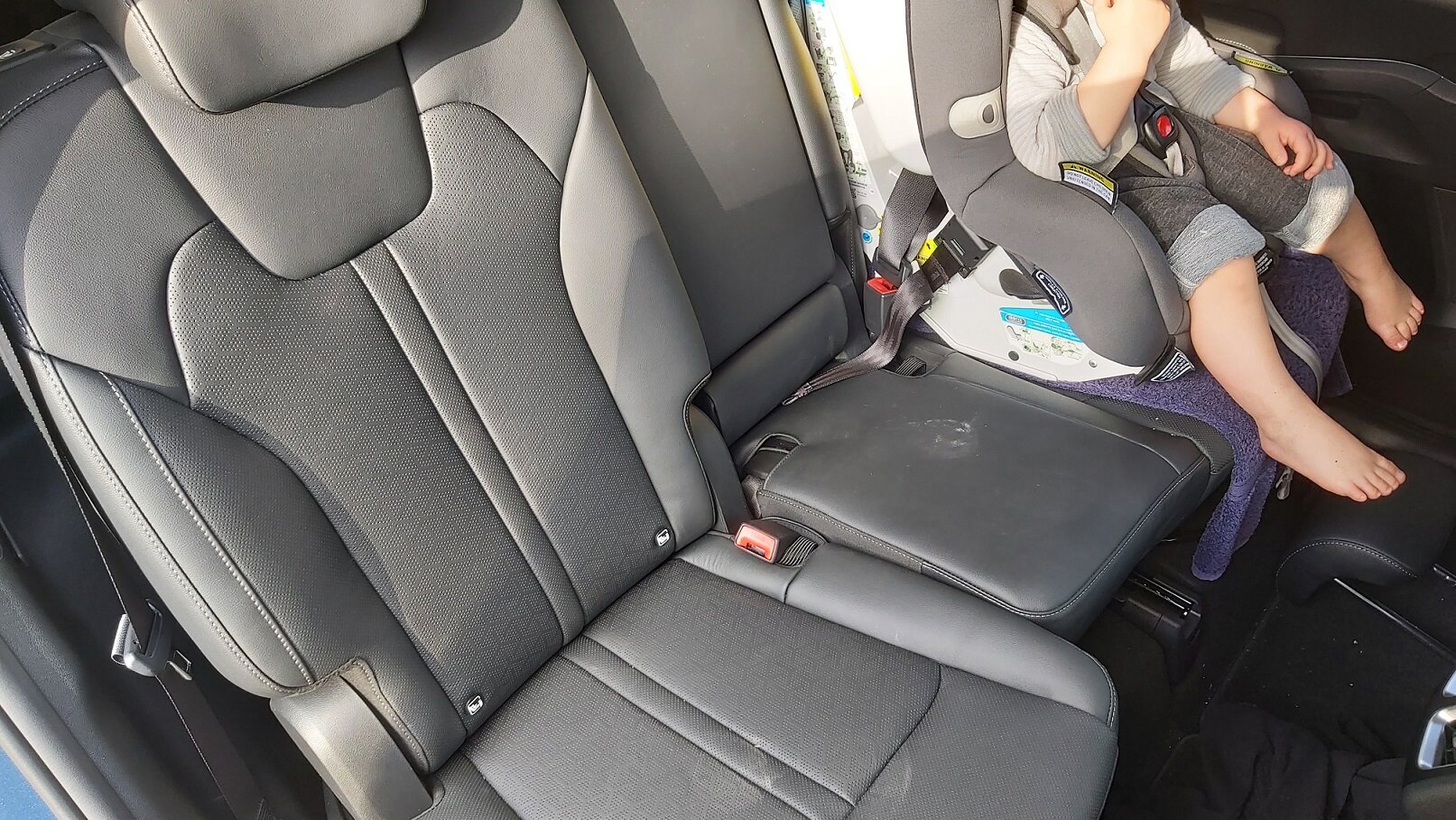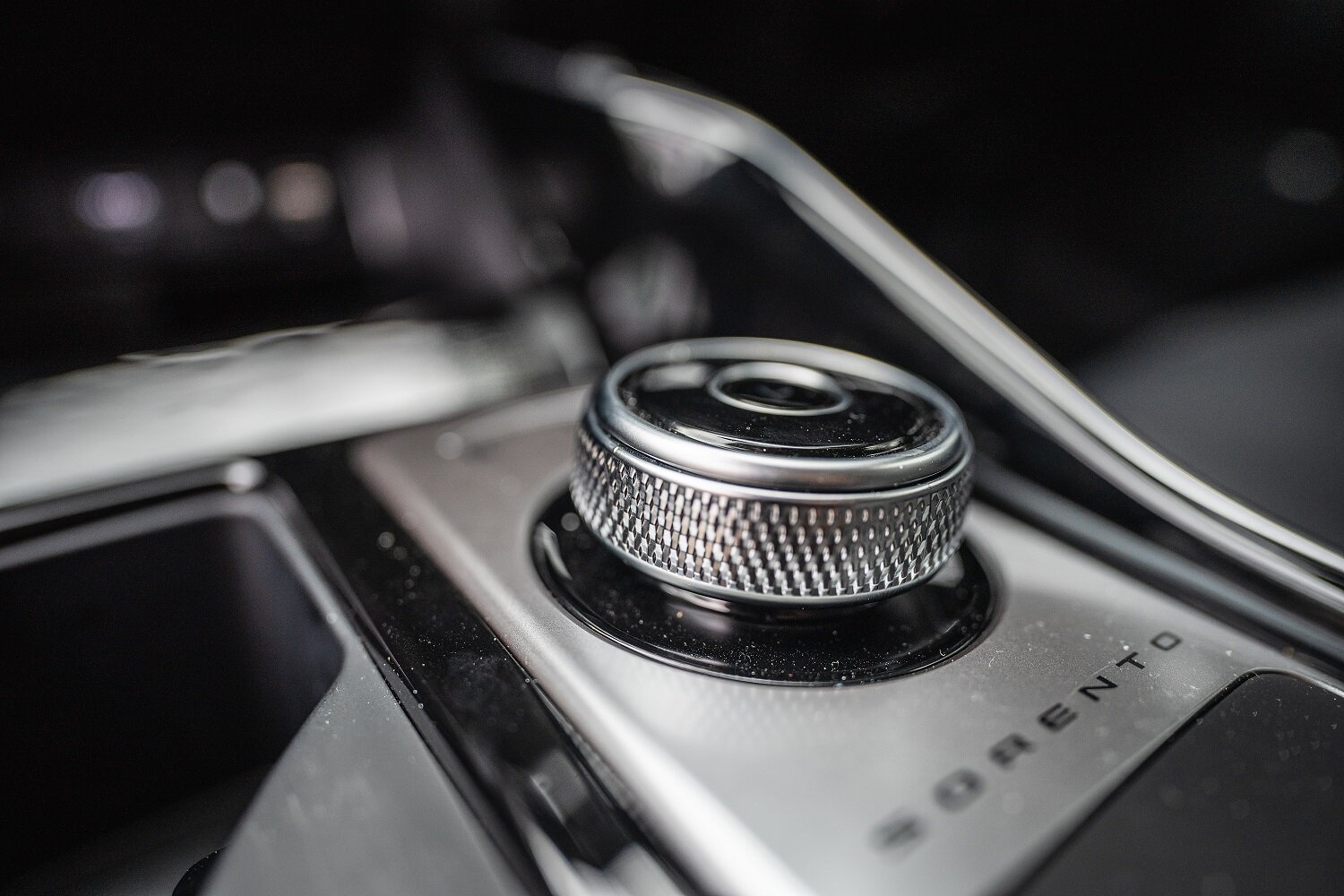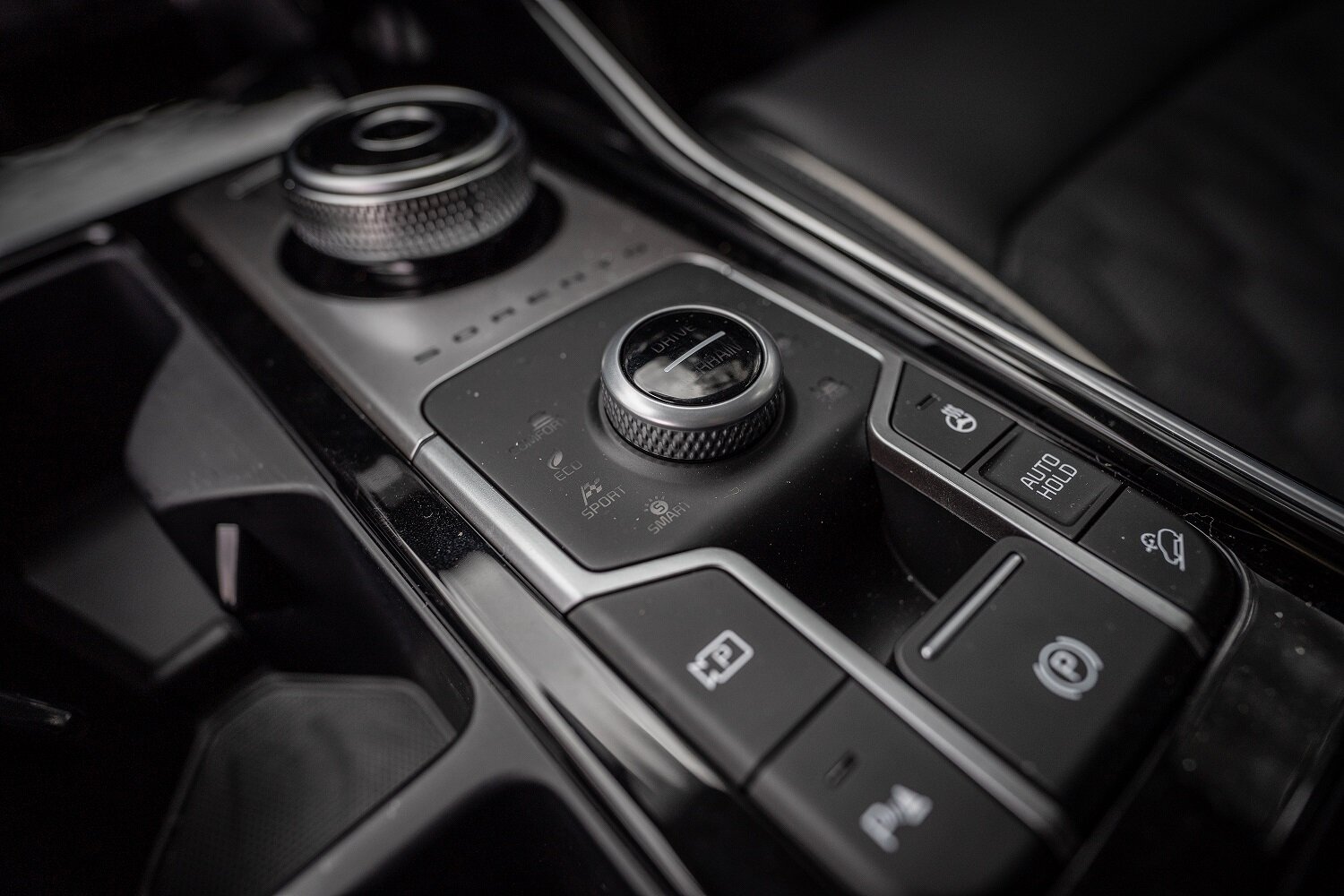Kia Sorento review and buying guide: This seven seat SUV has game
Sorento GT-Line images: Matthew Hayman, Haberdash Photography
If you’re in the market for a large seven-seat SUV like a large portion of Australian new car buyers, then I implore you to have a serious look at the new Kia Sorento.
And I highly recommend you take a test drive of Sorento before driving the (also luxurious) Mazda CX-9, the Hyundai Santa Fe, the Toyota Kluger and LandCruiser Prado - and if you’re shopping for a premium German SUV, I also urge you to look at the price and specs of the fully-loaded GT-Line and ask what you could do with an extra $30,000.
I’ve just spent 2.5 weeks with the Sorento, one week in the top-spec GT-Line ($65,000 driveaway) and ten days in the ($57,000 driveaway) Sport+ (one step down from GT-Line). And while it’s easy to be seduced by all the cool toys in the bells-’n’-whistles special, I don’t recommend the GT-Line to most buyers, which I’ll explain shortly.
I want to start with the Sport+, because having spent the most amount of time in it, it’s very sharply priced and made the more profound impression on me, which is feedback real-world car buyers like you need to hear.
New 2021 Kia Sorento gets a five-star ANCAP safety rating, based on crash testing performed by EuroNCAP. Watch the video here_
Is Sport+ $8000 worse than GT-Line?
No. It isn’t. And that’s why I want you to read this part of my review first - because you could save $8000 and still have a very good seven-seat SUV.
The main reason I’ve drawn this conclusion is the engine and transmission. See, not long ago, the premium engine and transmission was reserved only for the top-spec version of any car you bought, and there were a few minor luxuries thrown in like climate control, paddle-shifters and maybe some early new safety tech.
But now, in many cases (but not all) you often get the sweet engine and gearbox across the range. Again, not always, but often, and certainly in the case of Sorento.
You get the Hyundai-Kia shared 2.2-litre turbo diesel engine with 148kW of peak power at 3800rpm, and the new eight-speed dual-clutch transmission (which you should learn more about here), all on the base model Sorento S ($50k). That’s good.
It’s good for you because in today’s car-buying market, where people typically aren’t really interested in engines and transmissions anymore - because they want tech and gadgets - the Sorento is different. I need to emphasise, this big two-tonne SUV actually feels really nice to drive because of this silky smooth powertrain.
The CX-9 and Kluger have a better power-to-weight ratio, but they don’t deliver peak power until 5000 and 6600 rpm respectively. Sorento just buggers off with 147kw from 3800 revs. It’s also lighter than the old model thanks to about 20kg removed from the engine alone due to using an alloy block.
Compared with its market rivals right now, Sorento Sport+ is such a strong offering. It’s $8000 cheaper than the Mazda CX-9 GT (which isn’t even the top-spec CX-9 Azami which cracks the $70k ceiling) and the Mazda, while a very good vehicle in its own right thanks to a crackling 2.5-litre SkyActiv turbo petrol engine, a sexy leather interior and rear doors with a perfect 90-degree angle of opening, it has a space saver spare wheel. That’s not luxury. That’s downright unsafe loaded with kids sharing a freeway with B-doubles and being restricted to 80km/h. CX-9’s reversing camera is also a bit average, and it’s 30cm longer than Sorento.
The Toyota Kluger, to be fair, is about to be replaced, but don’t hold your breath because supply could be an issue given it’s going to offer a hybrid drivetrain like the RAV4 - which had massive delays on stock globally. In the meantime, current Kluger has a big old 3.5-litre V6 petrol engine and it drives like a tank; the steering wheel is huge and the whole car feels cumbersome. We considered one a couple of years ago and my wife made these observations - not me. Kluger is about six years old now, but it sells like crazy in Australia - people love them, they’re everywhere, and they have a good resale value. But I think the market has moved on in terms of benchmark performance, handling and tech. No Android Auto or Apple CarPlay either.
Sorento Sport+ gets smartphone mirroring by default. Plus radar cruise control with a very good ergonomics setup, particularly activating and cancelling, adjusting speed in 1km/h increments, and increasing/decreasing the gap to the vehicle in front. The minimum distance you can set is a very safe two seconds, giving you plenty of time to respond to traffic ahead. And the cameras do an okay job smoothly adjusting speed as another car moves in front, on the freeway.
But Sorento’s ‘driver assistance’ tech does have some quirks, and one big problem, in my opinion…
The lane-keeping assistance (which tugs the steering wheel to centre you in a lane) is designed to default-on every time you start the car. And the off-setting is behind the touchscreen menu. I hate this because:
A) the vehicle is not a better driver than me and I’m legally in control at all times; and
B) it adds another layer of distraction by pulling on the wheel when you’re deliberately positioning the vehicle within the lane. Then, again it distracts by having to turn it off without the push of a simple eyes-free button; you’re not focussed on the traffic situation. Disabling the system (because the driver wants/needs it off) should be one quick press and it never comes back on again until the driver decides.
My Subaru Outback allows me this control with its lauded EyeSight system. Lane-support is permanently off, but radar cruise and auto emergency braking remain on at all times. That’s driver control.
I don’t have an issue with carmakers adding these features, because if they work once, they save your life or someone else’s, then it’s a net benefit to society.
But taking control away from the driver is a mistake. Removing that control and then adding further distraction is even worse. And Kia isn’t the only carmaker to do this, in all fairness. Generally, the human driver is going to be better than the tech. If I want to inch my vehicle closer to the emergency lane in preparation for a potential emergency situation (such as the adjacent truck straying out of their lane or a lump of something on the road) then you should absolutely be able to do so without the vehicle adding further stress by working against your objective.
And for transparency here, this feature is designed to save your life if, say, you’re driving the family home after a long weekend away (they’re all asleep) and you zone out for a moment on some desolate, tree-lined back road in the middle of nowhere. In that moment, I want my Sorento to be smart enough to scare the shit out of me, elevate my heart rate and pump adrenaline around my body. Like, pay attention you moron. Technology saves humanity, once again. It’s just up to you to decide where you sit on this.
None of this may be an issue for you because, perhaps you’re not analogue like me. But it’s food for thought and I’m a control freak when driving - you may also find it easier to compromise and adapt to these nuances. Personally, I struggle with having tech decide for me.
And this issue doesn’t make Sorento a bad car, because it’s not.
I say this to you because the new Sorento is so bloody good at literally everything else. It’s nimble, powerful, has a vast boot with easy-operation third row folding seats, there’s heaps of legroom even for growing teenagers, and it would be a decent towing vehicle (up to two tonnes) if you have a light or medium pop-top camper trailer.
The Sorento interior is very well organised. Cupholders are behind the transmission shifter in Sport+ and rotary dial in GT-Line, and to the left of the drive-mode selector dial. The flip-down cubby-hole cover doesn’t feel very robust (none of them ever do), so don’t let toddlers play in the front.
Other ergonomic points go to the deepness of that main cubby and other holes for phones, keys, face masks, hand sanitiser, packets of tiny teddies and the rest.
The boot itself has a good, wide opening at about 1.3m on the sill, and about the same width between the wheel-arches which get dual cupholders, fan adjustment and a USB point each. Excellent ‘keep quiet’ value, even on Sport+.
Installing a child seat is dead easy. The top tether is exactly where you expect it to be reaching over blind for the first time, even with my somewhat compromised arm length. Isofix points are fairly easy to locate, even though you can’t actually see them below the seat cushion. Happily row three also gets two isofix points (total of four) and five top-tether points (incl. row two centre).
However, I’m disappointed to see the electronic child door locks are only on GT-Line (not range-standard), meaning you’re stuck with the manual kind found inside the rear doors. That same frown goes for the rear occupant alert only on GT-Line. Parents get stressed, we know there are too many incidents of kids being left in the car which has disastrous consequences in a hot climate like Australia; this could’ve been made standard on a $50,000 mainstream SUV in 2021.
The same goes for airbags. And Kia won’t like me saying this. This is arguably the most important vehicle for Kia for the next five years. Yet curtain airbags in their flagship Sorento are not found in row three - in a seven-seat-only SUV. One, if not the primary reason for buying a Sorento is for seven seats. But Kid #4 and #5 don’t get basic head protection in the event of a T-bone crash.
Mazda CX-9 has curtain airbags in row three. So does Kluger. If you want row three curtain airbags in a Kia, you might want to consider the new Carnival people-mover (when it arrives), which is highly-likely going to be a better big-family hauler.
In light of this, I’d encourage you to think about what kind of use you’re expecting to get from row three. If they’re going to be occasional-use only, and for the sake of keeping to your budget, it’s probably unlikely you’ll ever have needed airbags back there. And driving is statistically pretty safe; Sorento is an extremely safe vehicle overall, including offering a new centre airbag which is far more likely to be used in the even of that T-bone crash to protect the front occupants.
But if row three is going to be their favourite place to sit for years to come, this might not be good enough to earn your cash - although I would encourage you not to strike Sorento off your list just yet.
There are also some kid-related problems I can forsee on both Sport+ and GT-Line. Such as buttons. Kids love buttons. Thinking they won’t push a button is like expecting the dog not to eat that floor-bacon. Delusional.
Putting the seat-adjustment buttons in place of the conventional (traditional? Old school?) levers could drive you mad. My two-and-a-bit toddler found it hilarious racing daddy to push the seat-back recoil button before daddy could stop him. Luckily, it only took 20 times for him to beat me before I managed to be quicker.
Also, on GT-Line, putting mummy’s electronic seat-back adjustment buttons on the inboard side of the seat bolster, above the centre console, means they’re going to fiddle with them on long trips. If they can’t reach with fingers, a marksman-like foot will see mummy pushed forward or lowered back, much to their delight.
Row two outboard seats slide back and forward independently, which is great. In Sport+ it uses the conventional mechanical slide lever, but you get the one-touch folding button standard on all Sorento variants, meaning to allow easy row-three access, the little guys can push the button, watch the seat fold and roll forward and climb in all on their own. But, as I said, they may use this against you.
If you have kids in car seats in row two who have too much room and can spare the knees of row-three sprouts, you can slide them forward and offer valuable inches.
Sport+ front and rear seats don’t get the perforated Nappa leather of GT-Line (which allows the cooling/ventilation function to drawn warmth away from your sweaty back), so you’re less likely to get crumbs and chocolate in there.
Sport+ also gives the driver a powered seat with dual memory settings, you get the powered tailgate and heated (auto-fold) mirrors, heated steering wheel, and a decent satnav which I admit didn’t get used because Google Maps is better.
Is Sorento GT-Line better than a Mercedes SUV?
Images: Matthew Hayman, Haberdash Photography
Well let’s start with driving it.
The DCT delivers super-smooth gear changes, and this car is pretty quick, not just for an SUV or a diesel. It’s never hunting for gears and doesn’t get bamboozled when you do silly things with it, and when you demand power, it responds.
The dual-clutch isn’t confused with moderate size speed humps in residential streets where you’re going up and down gears frequently from about 10km/h-50/60km/h. You can even take off very gently on a really steep hill and you'll never detect the moment the clutches engage and disengage.
The side view camera is clever, although somewhat redundant if your mirrors are adjusted correctly, but handy for watching those nasty bluestone kerbs in the city.
And if you get a flat, there’s a full-size spare across the range to get you back up and running. I would class this as more important than row 3 curtain airbags because it’s a critical active safety measure having the vehicle underpinned by matching wheels and tyres for ultimate grip and stability.
Reversing camera is crystal clear, 360degree view stitches together seamlessly and the clarity is fantastic.
Cabin lights are push activated, so no looking for switches or toggles in the dark, you just touch the light. Might be susceptible to greasy fingers.
You get elegant night time cabin lighting which feels very luxurious (at least to most people not already familiar with luxury apartment living.
Toggle style switches for air con and seat heating/cooling temps is a classy touch too.
I fully expected the rotary transmission selector dial would be clunky. But it isn’t.
I was prepared for an awkward rush when reversing out of my driveway. See, I have to come down a slope, wait several seconds for potentially oncoming traffic, cross the immediate lane of traffic which is on a blind corner, get the kid-side-left of the car out of the line-of-fire, and get the car stationary quickly in order to select Drive and get moving before the rear is impeding the opposing lane of traffic.
It’s sometimes a tricky coordination, and potentially dangerous, which is why I was ready to scrutinise the new Hyundai-Kia eight-speed dual-clutch. But I can’t fault it.
Like, it feels almost as good as an EV, in that you can’t decipher when it’s changed gear. Even going slowly up my driveway, deliberately being a bit of a mechanical bastard to the hardware.
Everywhere else inside the GT-Line is also very luxurious. The panoramic glass sunroof is elegant and well-tinted. There are no irritating whistles or singing noises from the cavity or the wind baffle, and it doesn’t take forever to open despite its size - and no, I didn’t get out the stopwatch. I don’t have time for that. (Dad joke).
GT-Line gets posh Nappa leather which is nicer to sit on than the seats in Sport+, a bit like pillowtop mattresses kick arse over the conventional kind.
The tri-zone climate control has plenty of fan speed even up the back; important for hot summers in Australia.
The door bins have enough room for most things and the lack of transmission shifter means it’s much easier getting big phones in and out. The wireless charger pad is down low in the forward storage bin but might be hard to get in and out if you have a phone case or cover like mine.
Overall, I think most people buying in this price range of $60-70,000 will find the GT-Line perfectly comfortable and luxurious. And kudos to Kia for the cooled seats, but I would’ve like to see a chilled centre console, just to one-up the premium German rivals.
Although, you’ll pay thousands just in Luxury Car Tax for them, on top of the six-figure pricetag. So maybe you can buy a really good Dometic car fridge with the money you saved.
The new Kia Sorento is a seriously impressive family car with features galore.
If you’re hyper-conscious about safety and the lack of row three curtain airbags bugs you, there are other options, but I feel like that might be not seeing the astounding value this car offers.
It’s inherently safe. And the most common crashes are nose to tail, in which case you’re more than suitably covered.
If the intrusive safety features annoy you, similarly, it probably should be a nuance to learn to live with because no car is perfect and you can override those intrusions. And again, Sorento is very clever; I’ve tested Kia’s auto-braking system and it's very good.
There’s ample boot space, it’ll tow two tonnes happily, and being a Kia, it’s going to be very reliable with good resale value and great dealer/brand support.
I’m aiming to do some towing with Sorento in the future so look out for that.
In the meantime, if you’re considering the new Kia Sorento for your next new car, email me with any questions you have.





